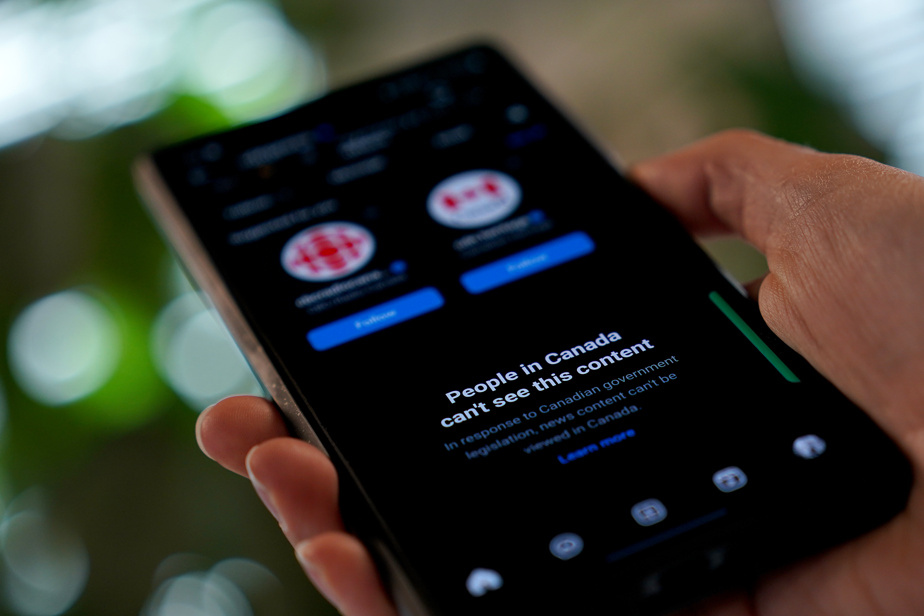(Montreal) Three-quarters of Canadians are unaware of the news blocking on Facebook and Instagram, but the vast majority of users of these platforms continue to use them to get their news, meaning they are faced with a more biased and less factual view of politics and news without really realizing it.
These are some of the conclusions reached by McGill University’s Media Ecosystem Observatory after analyzing the impact of news blocking by Meta, the owner of Facebook and Instagram, a year ago.
Influencers, politicians, friends and family
“We know that there are no more links to news on these platforms, but a large proportion of Canadians think on the contrary that when they use Facebook or Instagram, they can still obtain information on politics and current events,” notes, not without surprise, the director of the Observatory and principal author of the report, Aengus Bridgman.
But very often, it’s not source news. It’s just influencers, politicians, other accounts, friends or family sharing information.
Aengus Bridgman, Director of the Observatory and lead author of the report
Sharing news despite blocking
However, among other findings from the investigation, the researchers note that there is still some sharing of news that continues despite Meta’s efforts to block it “with copy-pasted article text or a screenshot.” [de la manchette] or with a link to X where the article is located,” Bridgman says.
The researchers also note that the number of links to news sites has collapsed since the block, implemented on August 9, 2023, with a tiny portion of links leading to third-party sites that redirect the user to an article, but that the quantity of screenshots of headlines has exploded in parallel, with Facebook and Instagram’s technology being unable to distinguish them from other photos.
The law could apply
In other words, some users circumvent the block in various ways, so that news continues to be shared on these platforms. However, the goal of blocking news on Meta’s platforms was to evade Canadian law that would require it to pay royalties to media outlets. This attempt, according to the researcher, is a failure.
“Meta and Google have tried to say that if they do not share direct links to media websites, they are not subject to this legislation, but our study shows very clearly that the content continues to be shared and if we look at the legislation, it is not written that a link is required [vers les nouvelles]. It says ‘facilitate access’. So yes, clearly, news is still being shared on these platforms,” Bridgman says.
This reality could provide leverage for lawmakers to try again to force Meta’s hand and force the giant to pay royalties, but such a decision has yet to be made.
Hard blow for the media
The report, titled “Old News, New Reality: A Year of Meta’s News Ban in Canada,” also paints a grim picture of the impact of the decision on the media themselves, particularly smaller ones.
For example, Canadian media outlets have lost 85% of their engagement on Facebook and Instagram – not 100% because, on the one hand, media outlets can still publish on these platforms and their content can be read outside the country and, on the other hand, because some continue to send users to news sites through backdoor means.
But because the loss was not offset by a shift of Internet users to the three other major platforms that still broadcast news (YouTube, X and TikTok), the researchers conclude that there was an overall 43% drop in Internet user engagement with news media on social networks in general.
The little ones are more severely affected
One nuance, however, that is not found in this report: the major French-language media in Quebec generally claim to be doing well with traffic to their websites showing growth.
However, several local and hyperlocal media outlets have simply disappeared from social media. The observation is alarming: no less than 212 local media outlets, or about 30% of those that were previously active on social media, have now disappeared from the platforms.
In many cases, Facebook was their only platform. Some small local media and some small indigenous media have closed down. We know that there is a total loss of their content, but we don’t know how much there is.
Aengus Bridgman, Director of the Observatory and lead author of the report
Loss of 11 million views per day
Equally concerning is the fact that Canadians are consuming less news. “Overall,” the report says, “Canadians are simply seeing less news online as a result of the blockage – an estimated 11 million views per day on Instagram and Facebook. Canadians are still getting their news about politics and current events from Facebook and Instagram, but through a more biased and less factual lens than before, and many don’t even realize the shift has taken place. They don’t seem to be looking elsewhere for their news.”
The researchers analyzed and compared content from the five platforms (Facebook, Instagram, YouTube, TikTok and X) during the periods of May 26 to June 19 of 2023 and 2024. They also conducted a survey of 1,463 Canadian adults between July 24 and 30, 2024. The margin of error in a probability survey of this magnitude is plus or minus 2.6%, 19 times out of 20.
